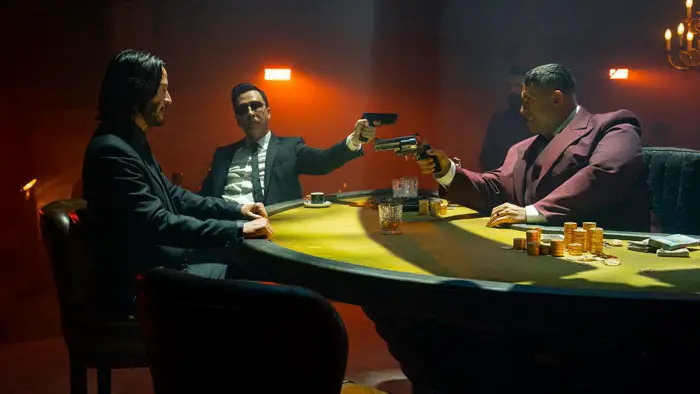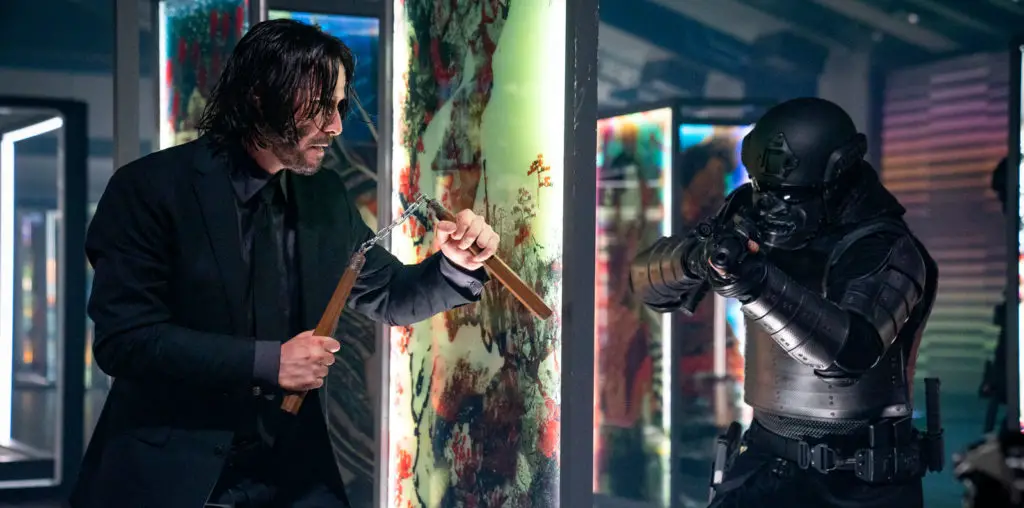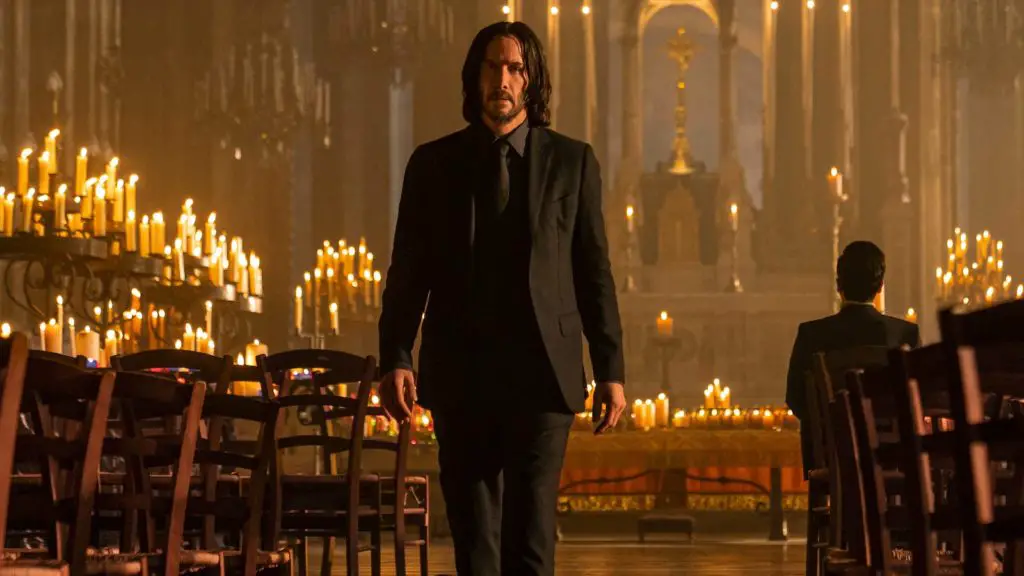
This process is already taking place in the characters that surround him. To highlight this point, let’s once again compare the first film and the fourth. The original John Wick featured two thematically strong supporting characters: Willem Dafoe’s Marcus, a steely old-time sniper, and Adrianne Palicki’s Ms. Perkins, a duplicitous femme fatale. Both characters maintain a sense of agency throughout the film because they follow the boundaries of narrative realism. They also suffer authentic consequences for their agency—Marcus dies because of his alliance with John, and Ms. Perkins is executed after breaking the rules of conduct at the New York Continental.
John Wick 4, on the other hand, features three characters that are immediately unkillable because of political armor: Akira, played by singer (read: celebrity) Rina Sawayama; Mr. Nobody, played by an actor whose name I already forgot; and Caine, played by the tremendous Donnie Yen.
These three characters, while cool in conception, function totally outside of the boundaries of narrative realism. Akira—the female concierge at the Osaka Continental—cannot simply be an interesting character because of her intelligence, like Lance Reddick’s Charon, she also has to be a ninja who can fight a man three times her size with ease; Mr. Nobody—the black savant hitman—is completely redundant outside of being an inferior version of Common’s Cassian from John Wick 2; and Caine—the blind assassin—is a blind assassin.
John Wick 4 goes out of its way to keep these characters alive, and as a result, huge sections of the film serve no purpose, and the runtime is inordinately bloated. Something is wrong when a movie about assassins is more concerned with keeping characters alive than with actual assassinations—even Mr. Nobody’s dog is invincible! An earlier John Wick film would have gleefully—and meaningfully—disposed of these characters.

“This constant reversal of consequence makes the entire John Wick universe feel cartoonish…”
This issue of parodied realism even extends to the world of John Wick. In the original film, Viggo Tarasov consistently speaks in Russian, even to his American consigliere, creating a richer and more realistic narrative. In John Wick 4, Hiroyuki Sanada’s Shimazu—the manager of the Osaka Continental—speaks to his daughter, not in Japanese, but in English; likewise, the High Table dispatch in Paris (located literally inside the Eiffel Tower) broadcasts not in French, but in English.
The issue of realism also affects the New York Continental, which is a character in its own right. In John Wick: Chapter 3, it was deconsecrated, only to be pointlessly “reconsecrated” by the film’s end. In John Wick 4, the hotel is immediately “destroyed,” only to be later resurrected with the promise of being rebuilt.
This constant reversal of consequence makes the entire John Wick universe feel cartoonish, if not episodic—by the end of each “episode,” we can all rest assured that the villains will lose and the (increasingly political) heroes will win. If such a thought sounds alarmingly like a Marvel method of filmmaking, it should—we need all pray that the John Wick franchise does not culminate in a gigantic and vainly extravagant battle featuring an undying legion of generic good guy assassins a la Avengers: Endgame.
And yet, all of these issues stem back to the titular character. If John Wick, the very soul of the franchise, cannot embody his Baba Yaga namesake, every part of the John Wick canon will invariably dissolve into masquerade—if the main character doesn’t abide by narrative realism, why should anyone else? It is vital to the survival of the franchise that future sequels are willing to let good things die—or, in other words, let actions have consequences.
Late into John Wick 4, the Harbinger—played by an impossibly dapper Clancy Brown—tells the Marquis: “A man’s ambition should never exceed his worth.” It was as if the film was unknowingly speaking to itself. Director Chad Stahelski and his cohort should strongly consider such insight moving forward, lest John Wick dies an ignoble death—or worse, fade away into legend.





